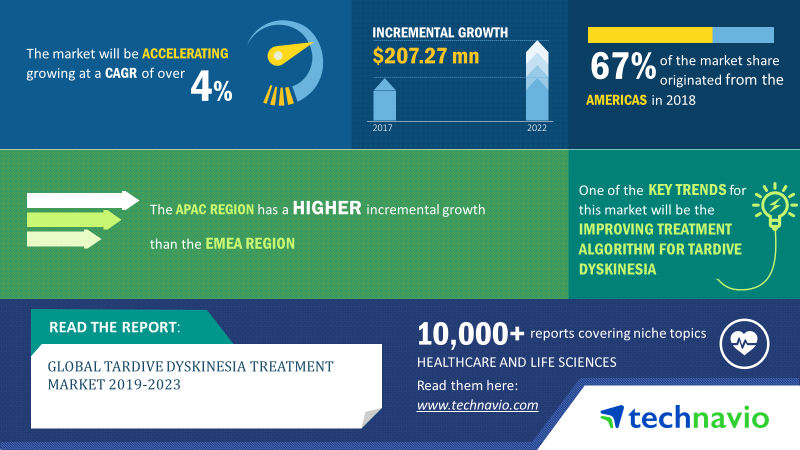Tardive Dyskinesia Treatment Market - Top Insights From The Latest Research
The global tardive dyskinesia treatment market 2019-2023 is expected to post a CAGR of more than 4% during the forecast period, according to the latest market research report by Technavio.
A key factor driving the growth of the market is the increasing use of antipsychotic drugs. Tardive dyskinesia occurs due to downregulations of dopamine (D2) receptors after long-term exposure to D2-blocking agents such as antipsychotic drugs and metoclopramide. These antipsychotic drugs are classified into first-generation antipsychotics or typical antipsychotics such as chlorpromazine, haloperidol, droperidol, and second-generation antipsychotics or atypical antipsychotics such as aripiprazole, risperidone, olanzapine, and quetiapine. These antipsychotic drugs are being consumed at a higher proportion, leading to various deformities such as tardive dyskinesia.
This market research report on the global tardive dyskinesia treatment market 2019-2023 also provides an analysis of the most important trends expected to impact the market outlook during the forecast period. Technavio classifies an emerging trend as a major factor that has the potential to significantly impact the market and contribute to its growth or decline.
In this report, Technavio highlights the improving treatment algorithm for tardive dyskinesia as one of the key emerging trends in the global tardive dyskinesia treatment market:
Global tardive dyskinesia treatment market: Improving treatment algorithm for tardive dyskinesia
Tardive dyskinesia is a common disorder affecting most of the outpatients with schizophrenia, who are treated with antipsychotic drugs. However, its treatment remains a challenge for physicians, mainly due to the limited number of available options and variable responses of individual patients by a few evidence-based therapeutic options.
Download the free sample report @ https://bit.ly/2V4AXOI


Comments
Post a Comment